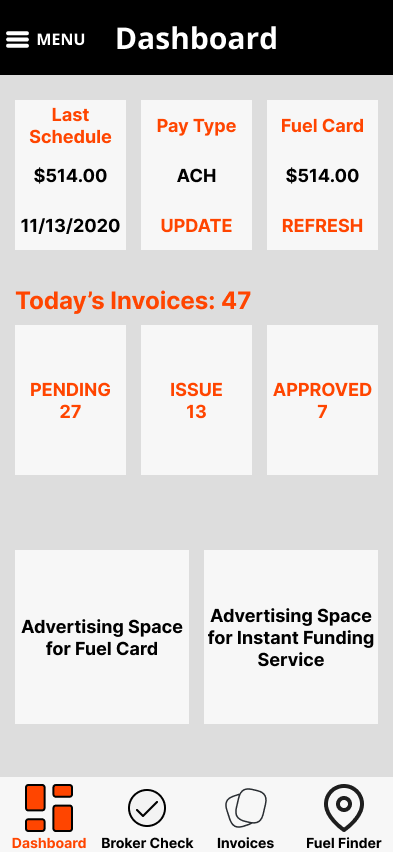
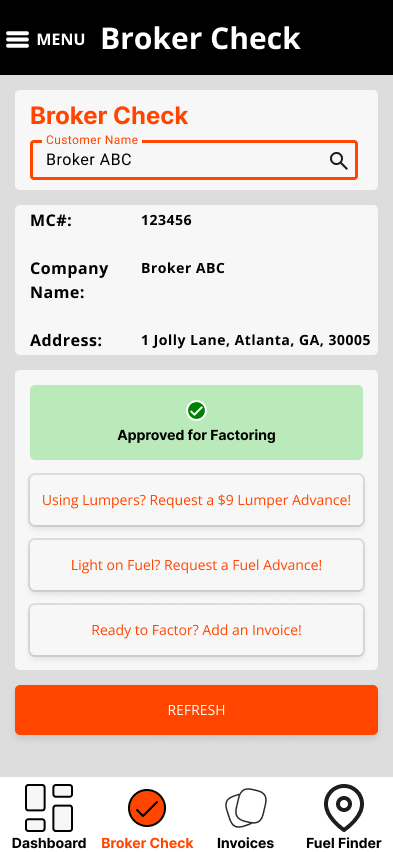
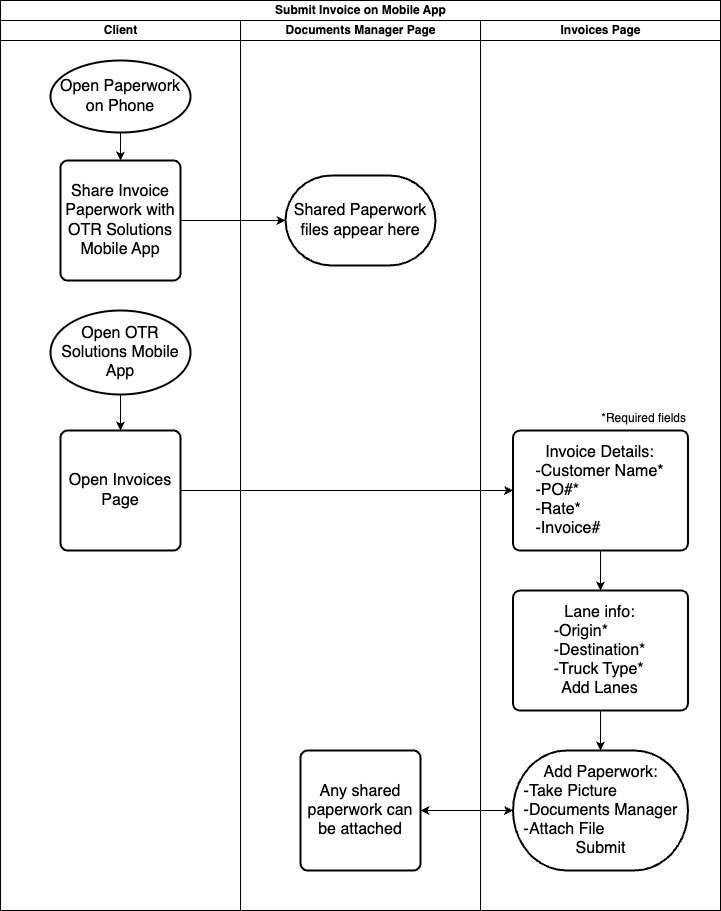
Rebuilding the Mobile App to meet market demands and enhance competitiveness.
For Clients: The existing invoice submission form was inefficient and lacked user-friendly design elements, contributing to user dissatisfaction. The app’s limited functionality only allowed invoice submissions and broker checks, leaving most user needs unmet.
For OTR: The outdated app structure created a barrier to client onboarding, impacting acquisition and retention rates. Freight owner-operators required a mobile solution optimized for submitting and reviewing invoices efficiently while on the road. Without app adoption, users submitted invoices through email, creating operational inefficiencies as internal teams had to process data manually.
Goal:
Rearchitected the codebase to align with modern frameworks, introduced a redesigned UI adhering to updated design systems (see Fig. 1 and Fig. 2), optimized the user experience, and enhanced engagement metrics, ensuring scalability for future feature development.
Defining Success:
A Unique Approach:
Ease of Scalability and Future Feature Integration: The app was designed to support easier debugging, enhance future development velocity, and simplify the addition of new features.
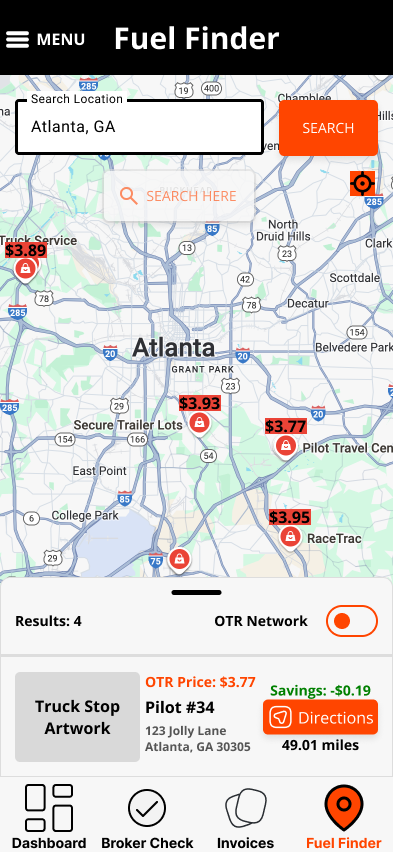
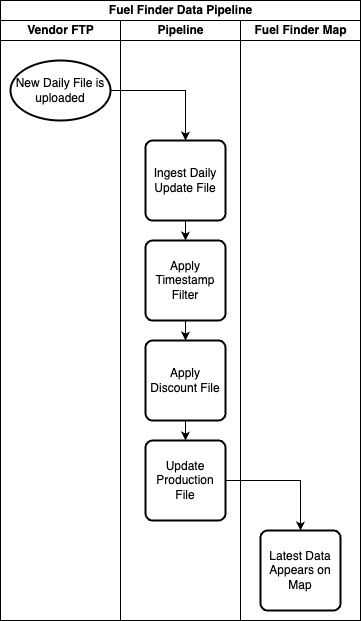
Empowering clients with real-time fuel savings at their fingertips.
Context:
OTR Solutions offered fuel discounts through its Fuel Card but lacked a user-friendly way for clients to locate these savings. Clients were unaware of where they could get discounts, what the discounts would be, or how they compared to other cards. This gap hindered card usage and client satisfaction.
Pain Points:
Goal:
Develop a Fuel Finder tool that allows users to locate discounted diesel truck stops, boosting OTR's card usage and sales, and providing value to clients (see Fig. 4).
Defining Success:
Research and Planning:
Innovative Approach:
Development and Testing:
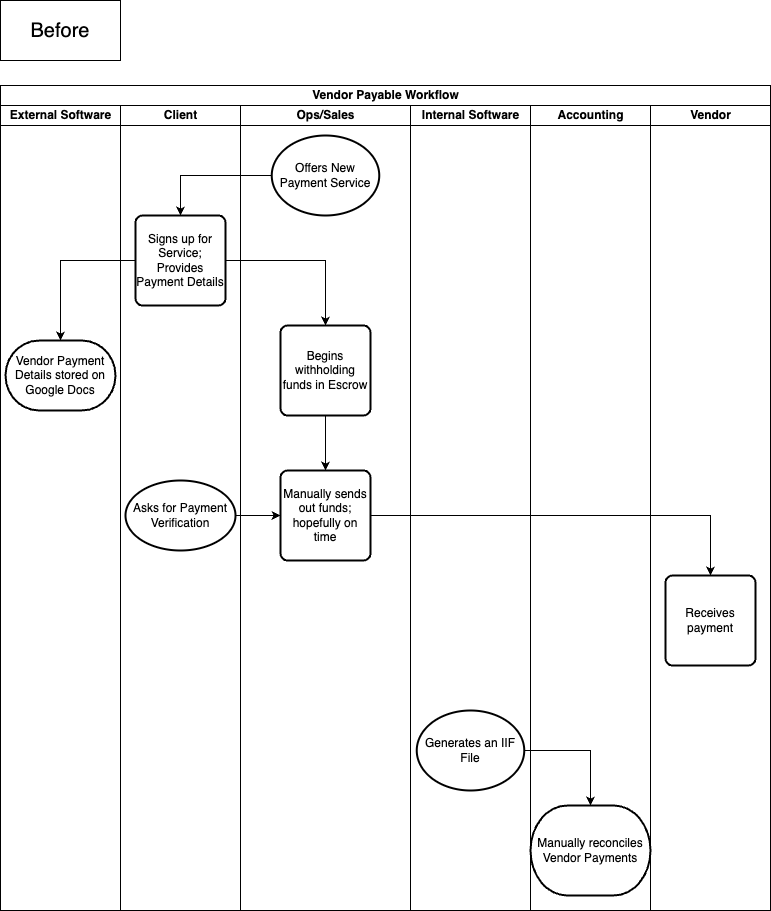
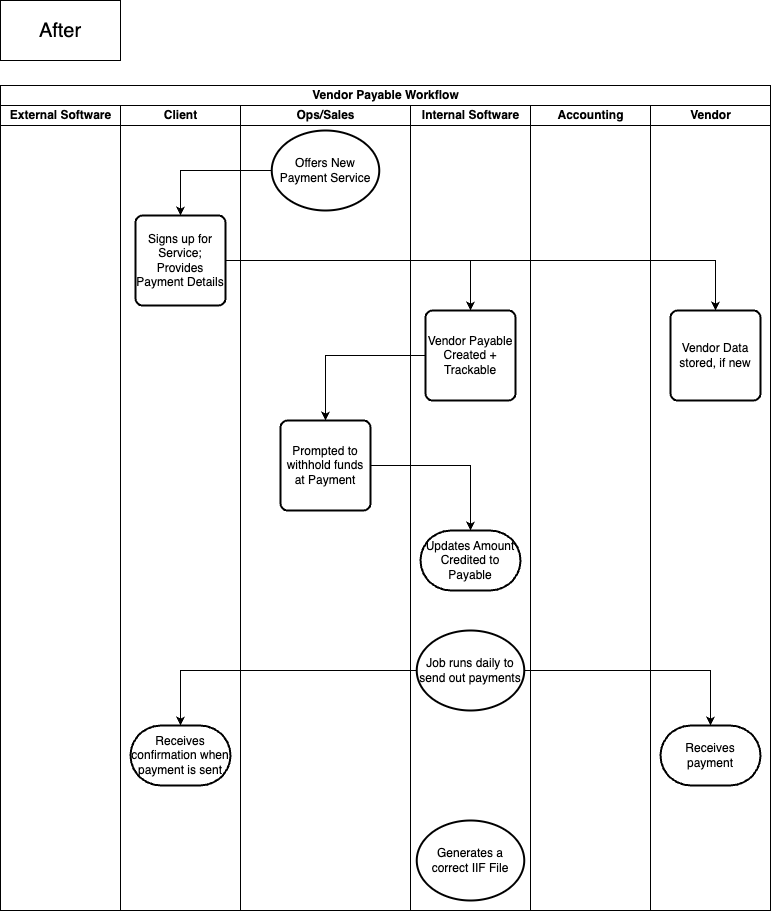
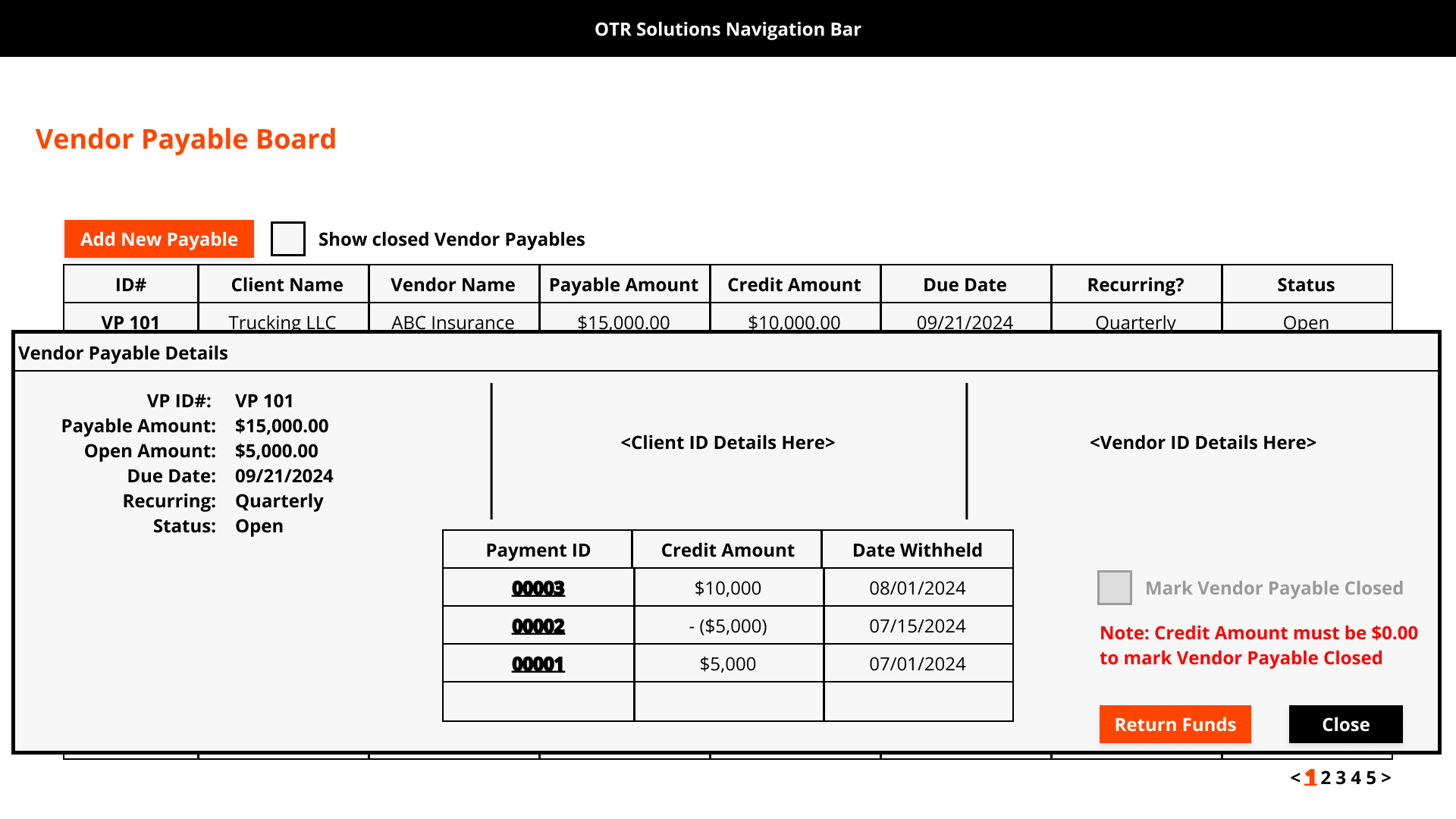
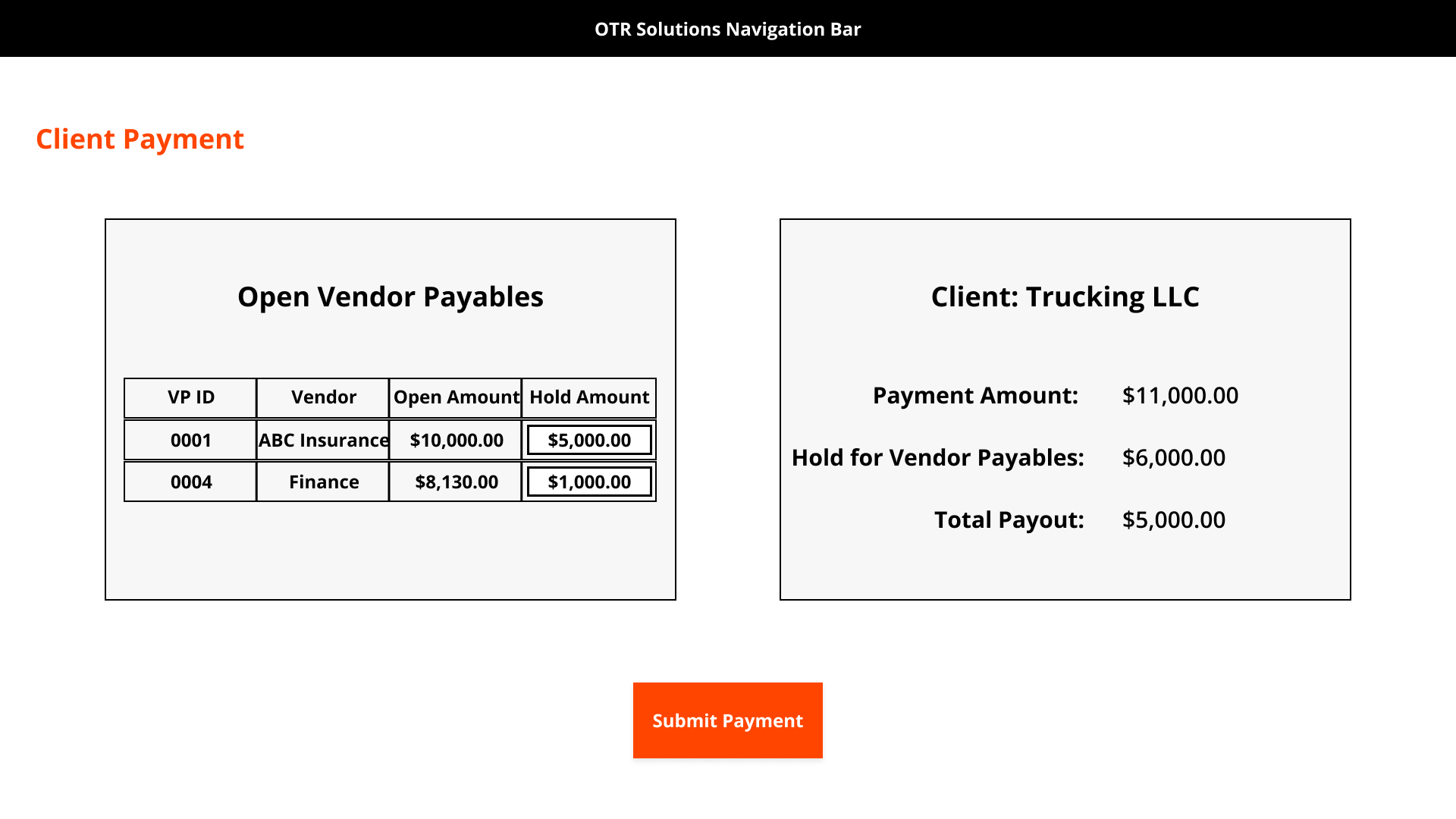
When your business depends on a moving truck, even one missed payment can derail your livelihood.
Context:
OTR Solutions needed a scalable solution to improve client retention by offering Vendor Payment services. However, manual tracking through scattered Google Docs created inefficiencies and frequent errors (see Fig. 6 for the manual workflow). Account teams were overburdened, risking client trust. Without a centralized system or clear processes, the feature was on the verge of failure, despite its growing demand.
Pain Points:
Goal:
Introduce an automated Vendor Payable management system that reduces manual effort, increases visibility, and empowers account teams to focus on high-value tasks.
Plan:
The project was delivered in three iterative phases using Scrum methodologies and Azure for backlog management:
Discovery and Solution Design:
The project involved cross-functional collaboration between Operations, Engineering, and Product teams. The Vendor Payable Board (see Fig. 8) provided a centralized platform where Account Teams could easily manage payables with clear visibility and actionable options.
Methodologies and Tools:
Tools: Azure for backlog management, Lucid Charts for flow diagrams, and Figma for UI/UX design.
Practices: Delivered value iteratively to provide benefits immediately and incorporate user feedback sooner.
Challenges and Solutions:
Metrics:
Business Value:
The Vendor Payable Board became a critical feature for retaining clients and enabling account teams to focus on strategic priorities, aligning with OTR’s mission to support small trucking businesses. Long-term, this service could evolve into a standalone subscription offering or be integrated into a SaaS model contract structure.
Testimonial:
“This tool took something that was front of mind daily out of necessity and turned it into a task we almost never think about.” – OTR Account Team Member
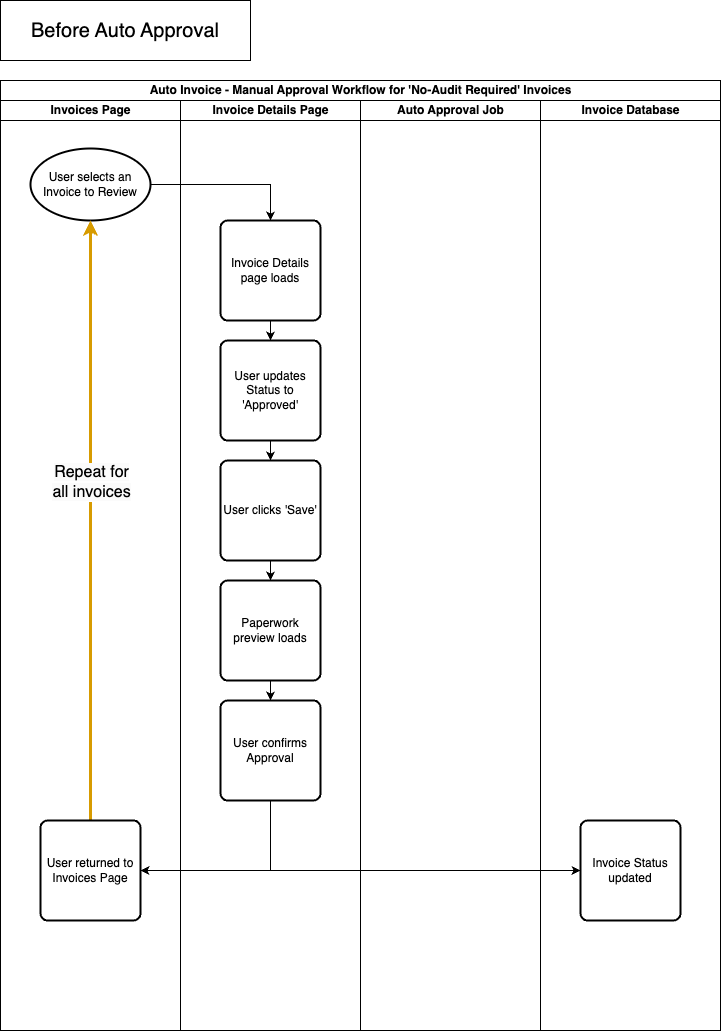
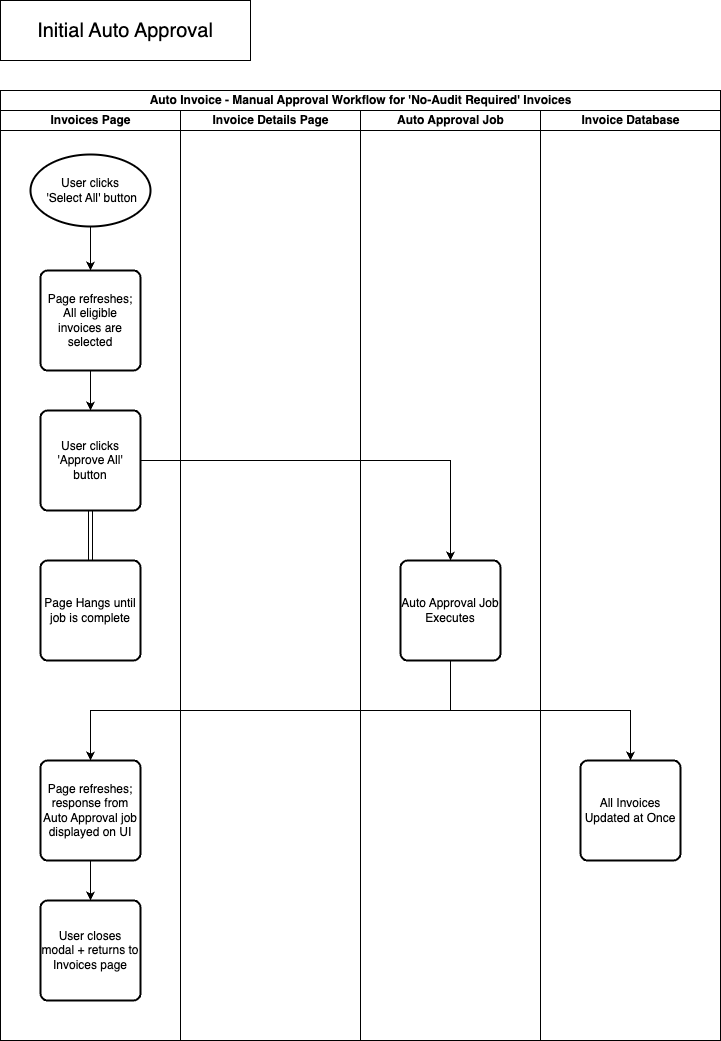
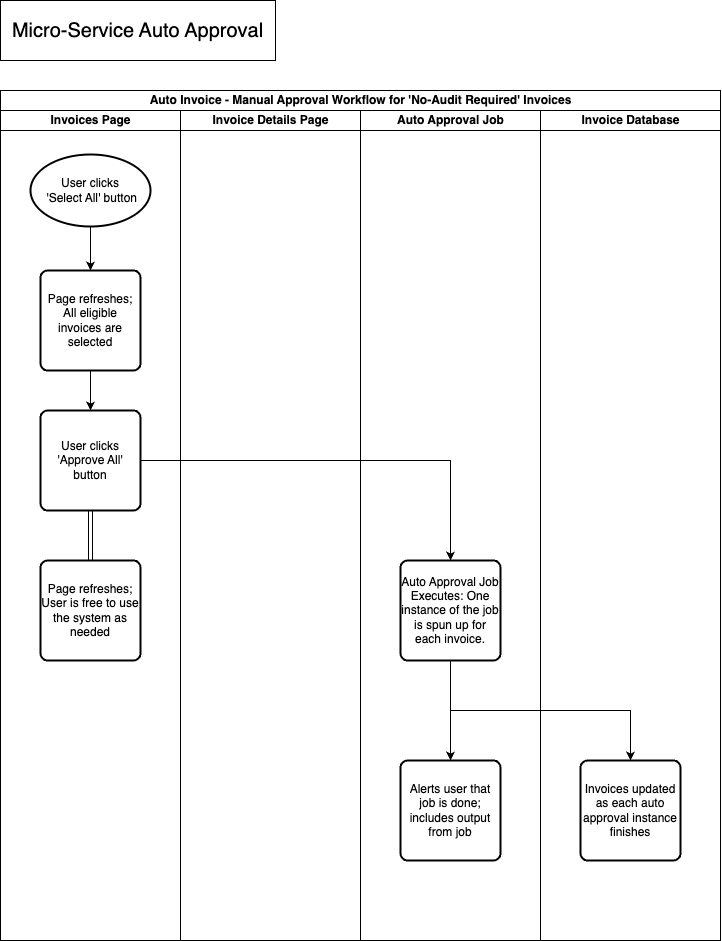
Focusing on what matters most by automating the repetitive approval of hundreds of invoices daily.
For Account Teams: Account reps were bogged down by repetitive tasks:
The result? Limited bandwidth for tasks requiring critical thinking and human oversight, hindering the growth of OTR Solutions' large-client offering.
Goals:
Initial Implementation:
Iteration: Microservice Architecture:
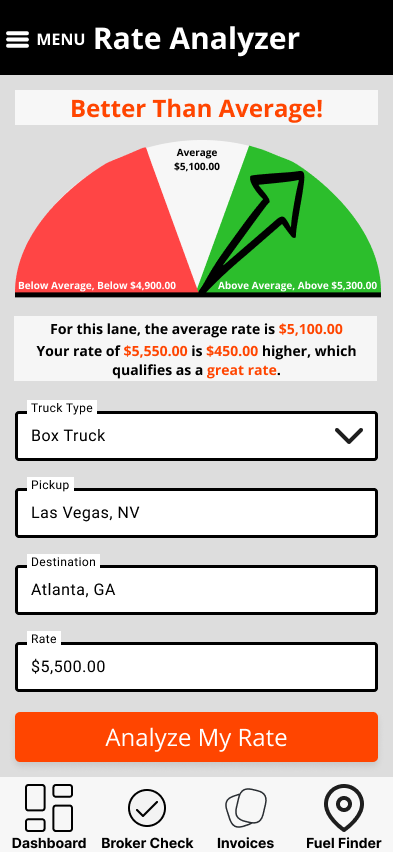

Tackling a $200 per lane earning gap required rapid analysis and bold solutions in freight rate strategy.
OTR Solutions set out to rapidly iterate on a Freight Rate Analyzer so they could:
Success was envisioned across multiple dimensions:
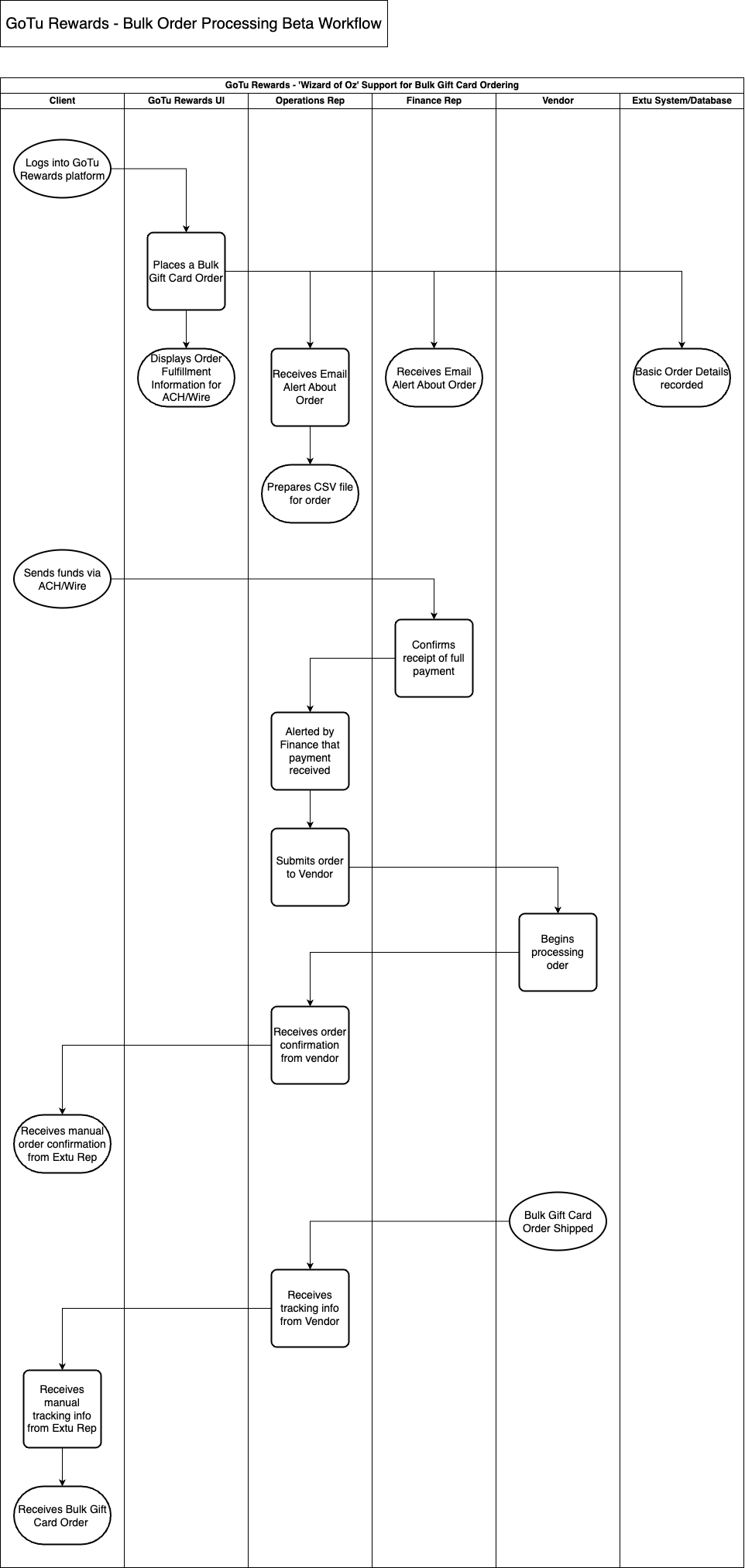
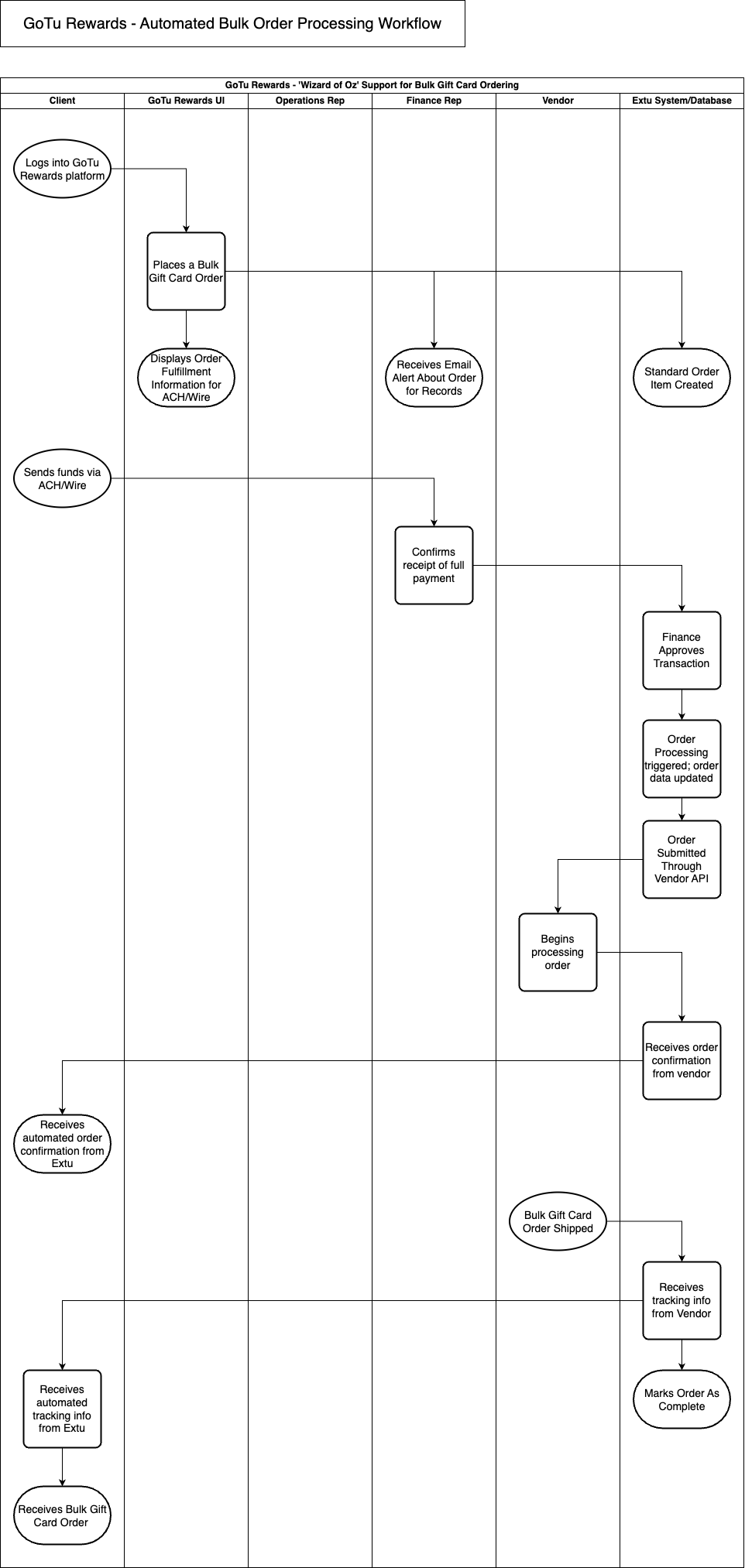
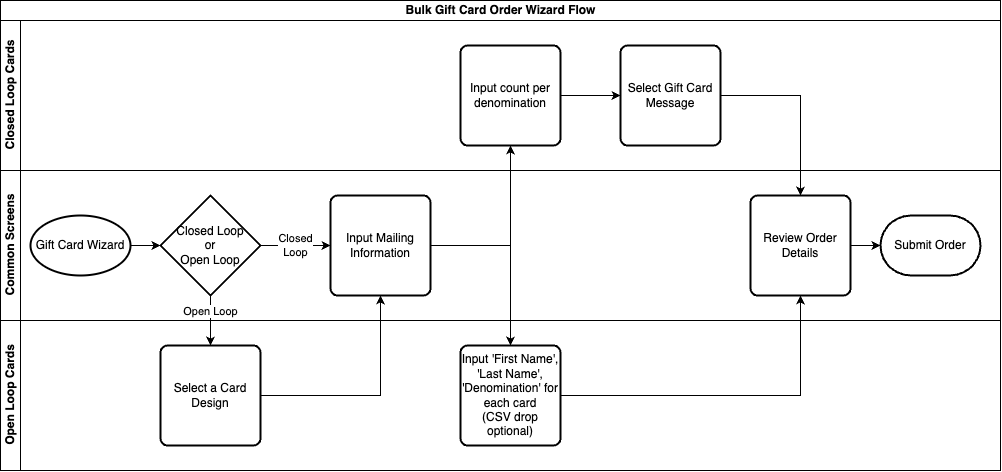
Leveraging existing partnerships and positioning in the loyalty industry to create a new standalone revenue product, selling gift cards in bulk.
Extu set out to launch an MVP for bulk gift card orders with the following goals:
Defining Success: Success for the MVP was measured by securing initial orders, positive user feedback, and commitments to larger future orders once the platform offered more options.
Aspirational Goals: Extu aimed to integrate this offering within a broader platform uniting its TCM (Through Channel Marketing) and CIM (Channel Incentive Management) business units.
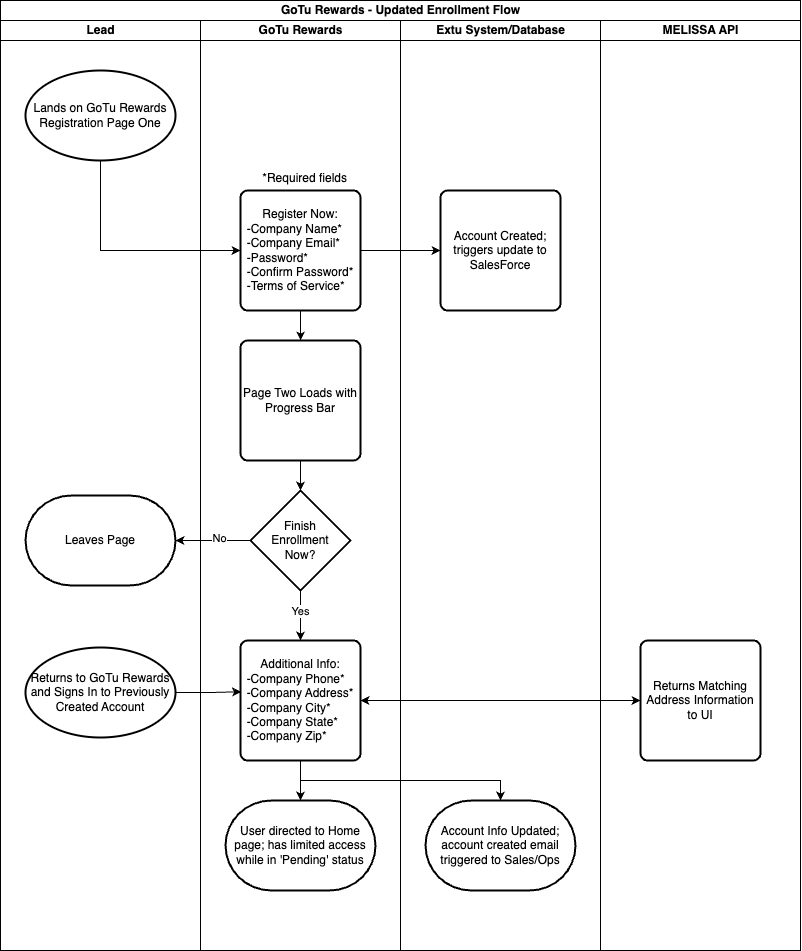

Creating a user-first signup flow to enhance lead generation and engagement by simplifying registration.
Extu set out to redesign the GoTu Rewards signup process with the following objectives: